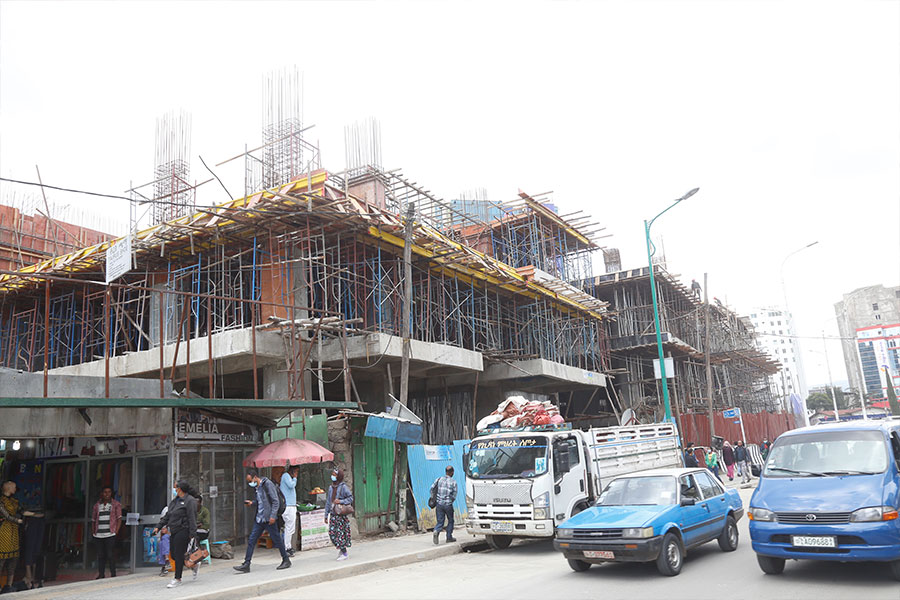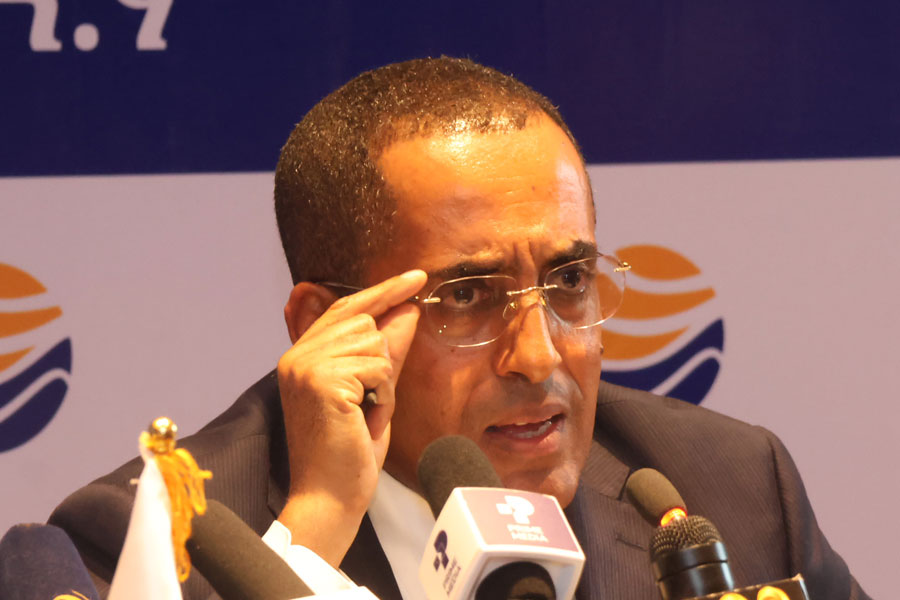
Viewpoints | Sep 04,2021
Dec 11 , 2021
By Chimimba David Phiri (PhD)
Global, national and local policies and programmes should ensure that people have access to appropriate quantities of livestock-derived foods at critical stages of life for healthy growth and development, writes Chimimba David Phiri (PhD) FAO subregional coordinator for Eastern Africa.
More than one-third of the world’s undernourished people reside in Africa. The number of the chronically undernourished continues to rise on the continent to a quarter of a billion in 2019, nearly one-fifth of the population. Of this number, 235 million are in sub-Saharan Africa.
Animal-derived foods, or animal-sourced foods (ASF), have an important role in reducing levels of malnutrition in developing nations. The benefits of consuming a reasonable amount of animal products are well known. Macronutrients such as protein, iron and B vitamins are more available in animal foods than plant sources. Chicken meat, eggs and milk provide high-quality proteins rich in essential amino acids; cereals generally lack these characteristics. Protein levels in foods indicate a higher percentage in animal source foods – in meat (26pc), dairy (four percent), eggs (13pc), fish (26pc), compared to grains (nine to 13pc), legumes (nine to 26pc) and vegetables (three percent).
ASF, therefore, can play a fundamental role in preventing micronutrient deficiencies. The nutrients in ASF are particularly vital in countries where malnutrition and micronutrient deficiencies are rife. The recommended protein requirement of 50-90 grams a person a day, can be obtained by consuming weekly 300g of meat, 1.75Lt of milk and milk products, four eggs and 150g of fish. Higher amounts are recommended for individuals engaging in high physical activity, pregnant or lactating women and children. Studies indicate that children under the age of five years, youth, women and girls, women of childbearing age, and pregnant and lactating women are vulnerable to micronutrient deficiencies, including iron deficiency (anaemia), one of the most prevalent micronutrient deficiencies in the world.
ASF are particularly critical during the first 1,000 days of life because malnutrition experienced during this period (between conception and the child’s second birthday) has the worst adverse long-term effects on the individual’s health and educational achievement. Micronutrient deficiencies increase a person’s vulnerability to infections, abnormalities, impaired development, and lower life expectancy.
Numerous factors increase vulnerability to malnutrition, including physiological and socio-economic factors that influence households and individuals to food and nutrition insecurity. A significant percentage of people in developing nations cannot access ASF. Poor communities often consume little or no ASF for various reasons, including limited availability, accessibility, affordability, dietary patterns, religious taboos and lack of knowledge on the nutritional attributes of ASF. In some areas, cultural and religious beliefs and taboos influence the consumption of such foods. There are restrictions under which ASF can be eaten or by whom; women and children, in particular, are often subject to such limitations. Meat is more likely to be subject to food taboos than any other food.
Despite these challenges, the high potential of ASF to improve the diets of vulnerable populations makes the livestock sector invaluable for national policies and development partner programmes focusing on food security and nutrition. The socio-economic role of livestock is substantial in many societies that associate livestock with cultural heritage and customs. Engaging in livestock activities can generate income for livestock keepers. The sale of ASF such as meat, milk, cheese, and eggs, non-food products, and various paid services such as draught power are the main advantages of livestock keeping. The livestock systems support the livelihoods of millions of people and contribute to healthy diets and resilience.
However, livestock is a neglected sub-sector, and funding for livestock projects has declined dramatically since 1974, mainly due to livestock’s contribution to climate change. Livestock-derived food production is believed to account for 14.5pc of human-induced Green House Gas (GHG) emissions and environmental impacts on biodiversity, freshwater use and disruptions to nutrient flows. However, this depends on production systems, farming practices and supply-chain management, where there may also be opportunities to mitigate these effects. Freshwater use is another challenge faced in livestock-derived food production.
Currently, significant efforts are being made by development actors such as the Food & Agriculture Organisation of the United Nations (FAO) to improve diets and raise levels of nutrition and mainstream nutrition objectives, activities, and considerations in food and agriculture policies and programmes of countries. There are also efforts to enhance livestock’s contribution to the Sustainable Development Goals (SDGs) by supporting the transformation of animal production systems to be economically, socially and environmentally sustainable.
The rising prevalence of child undernutrition, as well as adult and child obesity, is increasingly evident across many developing countries. Addressing this situation requires integrated, nutrition-sensitive actions across the entire food system. Specific actions are required to improve the diets of vulnerable population groups by increasing their intake of nutrient-dense foods (including ASF) to achieve healthier diets for all.
Demand wise, livestock products are likely to grow by close to 50opc by 2050, driven by Africa and southern Asia. Leveraging the potential of livestock and optimising efficiency in production systems is now more important than ever before, given the current global food security and nutrition situation.
Creating an enabling environment for enhanced linkages between livestock and human nutrition is critical. The livestock sector has a great potential to help address malnutrition, especially in regions where livestock production is the principal economic activity; and in areas unsuitable for crop production. Using livestock as a pathway out of malnutrition would be a great opportunity.
Institutional commitments are critical to generating the political will and action necessary to anchor livestock derived foods in sustainable healthy diets. Nutrition education plays a vital role in developing and delivering nutrition-sensitive agricultural development initiatives to ensure increased food production or income translates into diets and nutrition status improvements.
The evidence base on the impact pathways from livestock to nutrition and successful intervention models is a work in progress and needs to expand. Global, national and local policies and programmes should ensure that people have access to appropriate quantities of livestock-derived foods at critical stages of life for healthy growth and development. These stages start from six months of age, through early childhood, at school age, adolescence, and pregnancy and lactation.
There is a need for a more equitable distribution of livestock derived foods. The availability and affordability of safe livestock-derived foods in low-and middle-income countries must improve where social and cultural norms permit. Nutrition, health, livestock and sustainability policies at national and international levels need to be well aligned. Targeting women in livestock programmes will help to increase their control over productive and economic resources and improve the likelihood of directing income earned and food produced for maternal, childcare, and household nutrition and health. Similarly, targeting small-scale producers vulnerable to poverty and malnutrition can help create improved access to high-quality foods.
Policy and programme support for mixed farming systems that embrace circular agriculture and pastoral systems can help lower the environmental impacts of agriculture, including livestock production. Deeper insights into the bidirectionality of climate change and livestock-derived food production are needed, together with more evidence on the ability of sustainable food production systems to mitigate, and be resilient to, climate change. With these steps, we could harness the potential of livestock derived foods to improve food and nutrition security in Africa.
PUBLISHED ON
Dec 11,2021 [ VOL
22 , NO
1128]


Viewpoints | Sep 04,2021

Advertorials | Oct 10,2019

Addis Fortune | Mar 28,2020

Radar | Jan 11,2020

Viewpoints | May 01,2020

Fortune News | Oct 19,2019

Agenda | Sep 14,2024

Radar | Apr 19,2025

Fortune News | May 06,2023

Viewpoints | Jan 07,2023

My Opinion | 131974 Views | Aug 14,2021

My Opinion | 128363 Views | Aug 21,2021

My Opinion | 126301 Views | Sep 10,2021

My Opinion | 123917 Views | Aug 07,2021

Dec 22 , 2024 . By TIZITA SHEWAFERAW
Charged with transforming colossal state-owned enterprises into modern and competitiv...

Aug 18 , 2024 . By AKSAH ITALO
Although predictable Yonas Zerihun's job in the ride-hailing service is not immune to...

Jul 28 , 2024 . By TIZITA SHEWAFERAW
Unhabitual, perhaps too many, Samuel Gebreyohannes, 38, used to occasionally enjoy a couple of beers at breakfast. However, he recently swit...

Jul 13 , 2024 . By AKSAH ITALO
Investors who rely on tractors, trucks, and field vehicles for commuting, transporting commodities, and f...

Jul 5 , 2025
Six years ago, Ethiopia was the darling of international liberal commentators. A year...

Jun 28 , 2025
Meseret Damtie, the assertive auditor general, has never been shy about naming names...

Jun 21 , 2025
A well-worn adage says, “Budget is not destiny, but it is direction.” Examining t...

Jun 14 , 2025
Yet again, the Horn of Africa is bracing for trouble. A region already frayed by wars...

Jul 6 , 2025 . By BEZAWIT HULUAGER
The federal legislature gave Prime Minister Abiy Ahmed (PhD) what he wanted: a 1.9 tr...

Jul 6 , 2025 . By YITBAREK GETACHEW
In a city rising skyward at breakneck speed, a reckoning has arrived. Authorities in...

Jul 6 , 2025 . By NAHOM AYELE
A landmark directive from the Ministry of Finance signals a paradigm shift in the cou...

Jul 6 , 2025 . By NAHOM AYELE
Awash Bank has announced plans to establish a dedicated investment banking subsidiary...